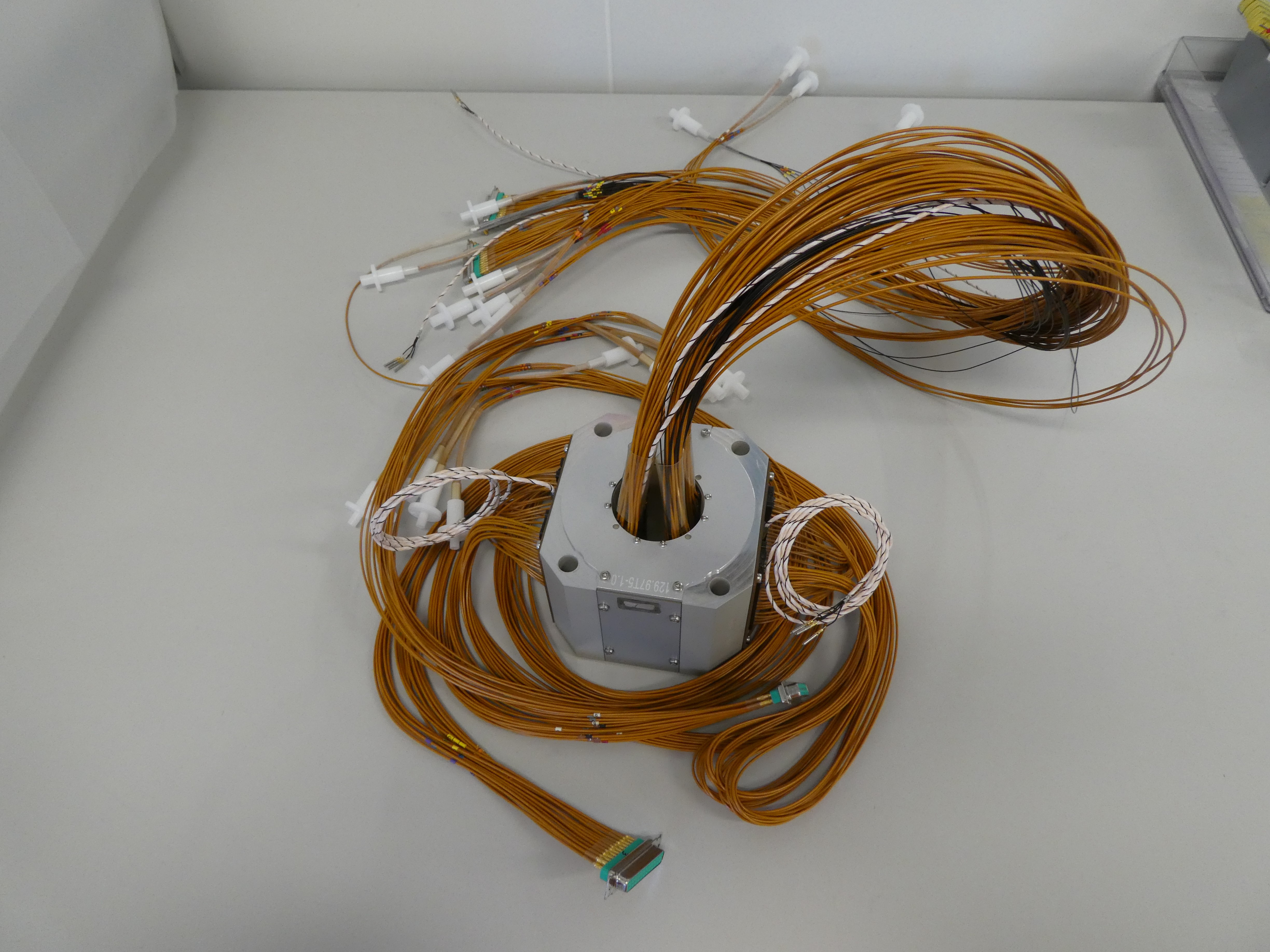
-
StatusCompleted
-
Status date2023-04-18
-
Activity Code4F.143
Power Transfer within Space mechanisms, such as Solar Array Drive Mechanism (SADM), is in principle insured by a contact technology.
These components known as Slip Rings are of two types: Cylindrical and Pancake.
The project was aimed to develop an advanced cylindrical Slip Ring unit compatible with High Voltage bus operating at 400V to cover next generation of High Voltage – High Power Mechanisms. At this operating voltage, the growing demand to increase the power of spacecraft (>10kW) could be achieved providing several benefits. However, the slip ring design must take care of arc discharge phenomena during launch phase and overall spacecraft lifetime.
Therefore the objectives of this activity were to develop, manufacture and test a Breadboard Model in a relevant environment in order to demonstrate the outstanding electrical performances of this new product but also to assess the voltage margin defined by this advanced design.
The main challenges of the development are related to :
-
the gas breakdown mitigation due to the operating voltage up to 400V. When the voltage exceeds 200V, the probability of arcing inside the Slip Ring increases dramatically. This phenomenon is maximized at the launch phase of spacecraft when Solar Array is deployed while vacuum level is not in the safe region (Pashen Law). Therefore, an advanced design is carried out to increase the voltage breakdown limit.
-
The temperature, the voltage polarity and the pressure range close to the High Voltage rings are significant parameters that influence voltage margin.
-
Transient effects (switching power/voltage/current) on the power bus that could generate overvoltage and electrical discharge
Dynamic resistance that shall remain as low as possible
The main benefits brought by this product is to transmit high power (>20kW) with high voltage bus from the solar panels to the spacecraft resulting in major energy/mass saving, and enabling a direct drive for high power electrical systems.
Direct drive idea has been around since at least 1970. The key motivation in developing direct drive is to significantly reduce the mass of high-power, solar electric propulsion vehicles by eliminating most of the heavy, expensive power-conditioning electronics between the solar array and the electric thrusters.
Furthermore, recent spacecrafts tend to perform multiple missions to reduce launch cost. To adapt to the objective of multiple missions, the size of spacecraft is getting bigger as well as their power level (>50kW), requiring high voltage – high power Solar Array Drive Mechanism.
High voltage slip ring provides operating voltage up to 400V with a minimum power capability of 20kW. The key feature of this high voltage slip ring is the optimization of its design as a generic building block (modular approach) to enhance electrical performances while considering mass, volume, external environment and also depending on the final platform/mission power need.
The advanced cylindrical slip ring is composed of two main sub-assembly :
-
Rotor sub-assembly : the rotating part of the slip ring
-
Stator sub-assembly : the fixed part of the slip ring
The contact between stator and rotor is ensured by wire brushes, soldered at stator side on a PCB and preloaded to be in contact during all the life time with the track. Rings shape, brushes position and casing will be optimized to enhance electrical performances at high voltage.
Main project milestones are :
-
Milestone 1 on December 2020: Requirements review for the high voltage slip ring. The details of the architecture were studied and traded-off while considering electrical performances with a specific focus on voltage
-
Milestone 2 on July 2021 to reach the PDR level for the BBM. Based on 3D model including brushes, the slip ring design is optimized to enhance electrical performances to its maximum voltage range capability.
-
Milestone 3 : Completion phase in October 2022. This milestone covers the manufacturing, assembly, integration and testing of one BreadBoard Model in a relevant environment
The BreadBoard Model proved to function within 400-500 volts (and 8A) from very low pressures (10-5mbar) to the most critical pressure values (around 1mbar), with a resulting transferred power of up to 40kW (10 forward and 10 return lines).
An accelerated life test highlighted outstanding HV performances without any arc discharge phenomenon, confirming our ability to increase the voltage bus of next spacecraft generation.

The project final review was held on September 26th 2022. The project is now completed.




